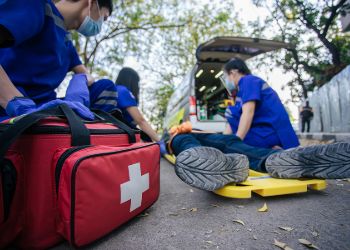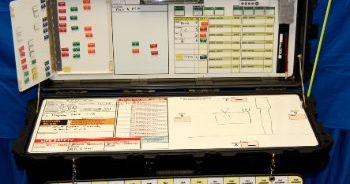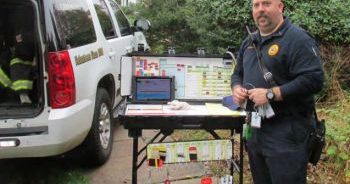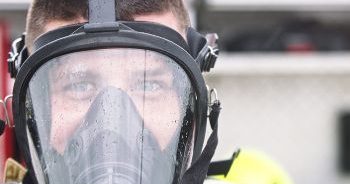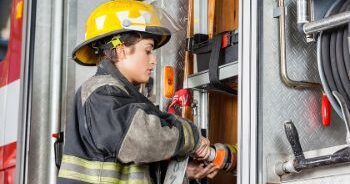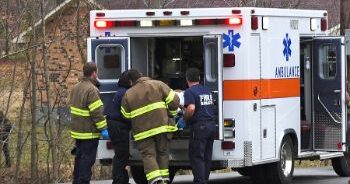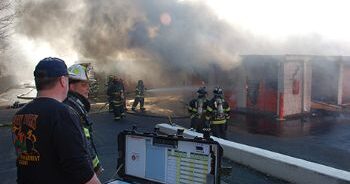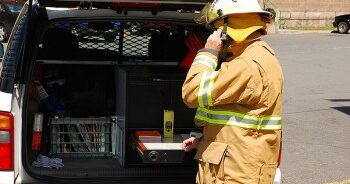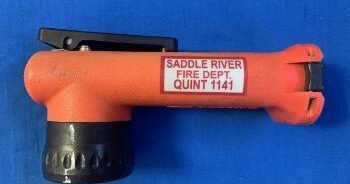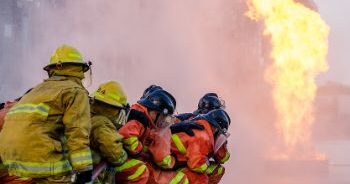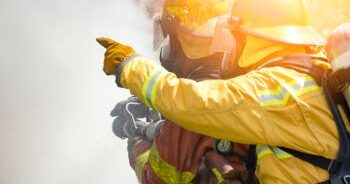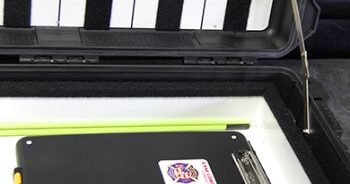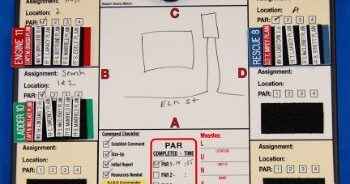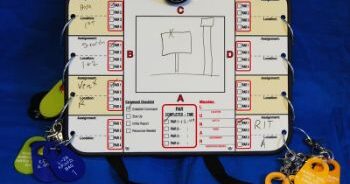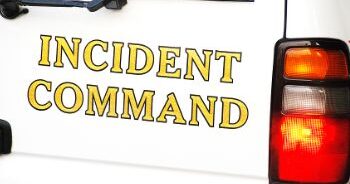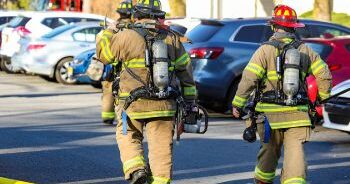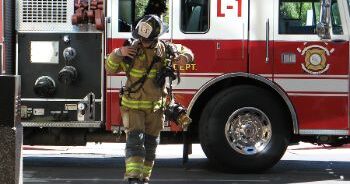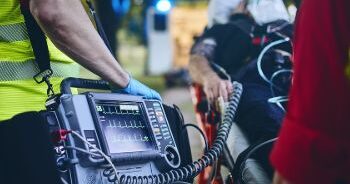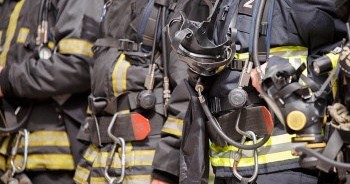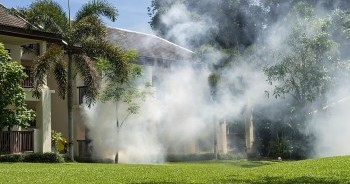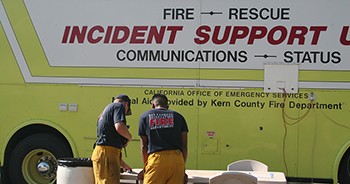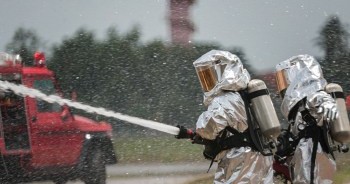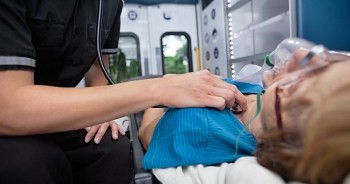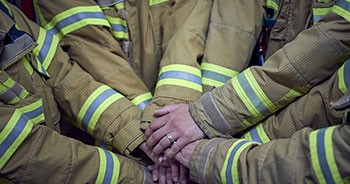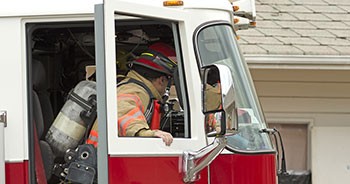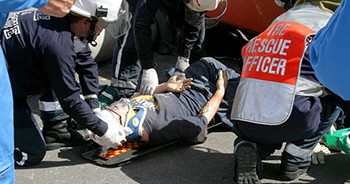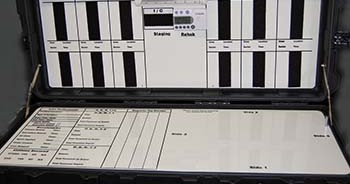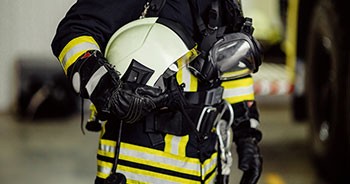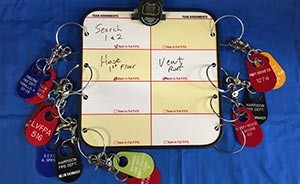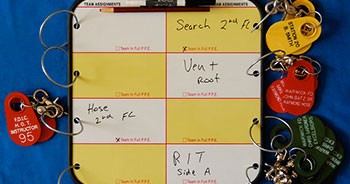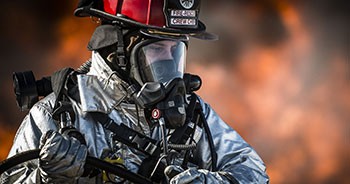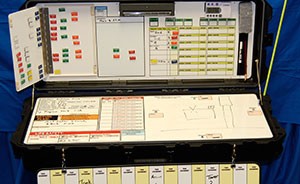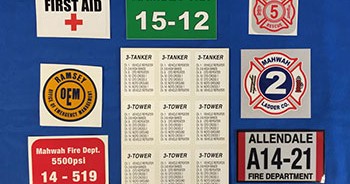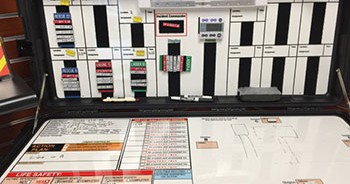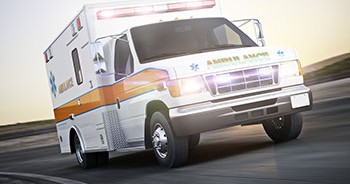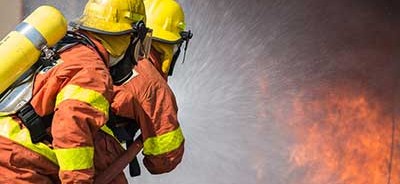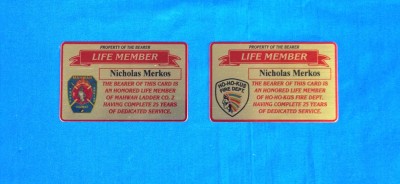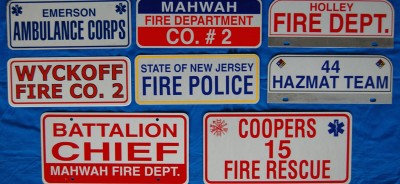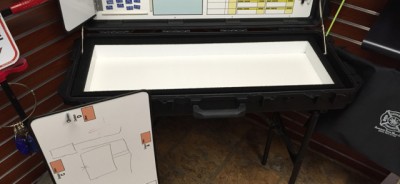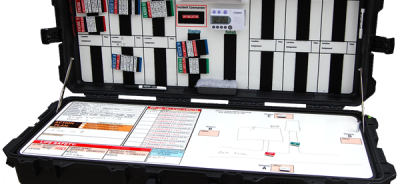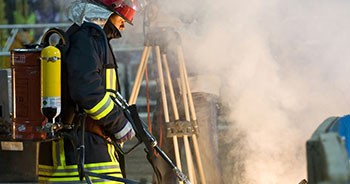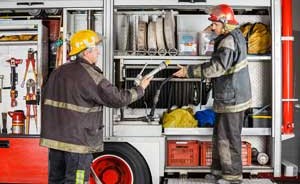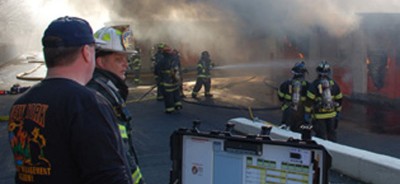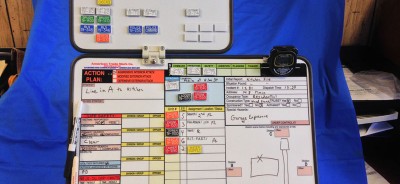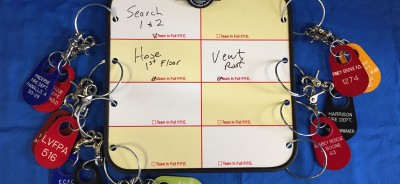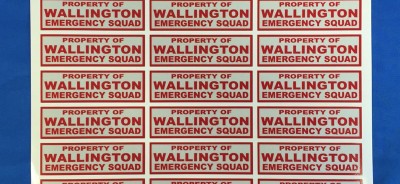Emergency Infection Control In EMS
In Emergency Medical Services (EMS), infection control is vital to protecting first responders and patients. As the first on the scene, EMS personnel face exposure to various infectious diseases. American Trade Mark Co. supports EMS professionals nationwide with essential tools to uphold strict infection control standards. Proper use of personal protective equipment (PPE) and adherence to sanitation protocols help minimize risks. Ensuring compliance with these measures is crucial for maintaining safety in high-risk environments.
Infectious Diseases Risk For EMS Workers
EMS personnel face a higher risk of a wide array of infectious disease risks, ranging from common colds to serious illnesses like tuberculosis and influenza. The unpredictable nature of emergency scenes adds layers of complexity to infection control. Awareness and preparedness are crucial to managing these risks effectively for first responders.
Staying Safe On The Front Lines With PPE
Personal Protective Equipment (PPE) is essential in EMS settings, protecting responders and individuals during emergencies. Proper use of protective gear and precautions significantly reduce the risk of infectious disease transmission, especially when dealing with unknown illnesses. Regular EMS training is important to stay informed about the latest protocols and guidelines to ensure maximum safety. Key elements of PPE include:
- Gloves: Protect hands from contact with blood, bodily fluids, and contaminated surfaces.
- Gowns: Shield body and clothing from infectious materials.
- Face Masks/Respirators: Prevent inhalation of airborne particles- respirators provide higher protection.
- Eye Protection: Goggles or face shields block splashes and droplets from reaching the eyes.
- Boot Covers: Prevent footwear contamination from bodily fluids and infectious substances.
Establishing Infection Control Protocols
Having standardized infection control protocols is vital for ensuring consistency and safety across EMS operations. These protocols are a critical framework that helps protect both the emergency medical service personnel and the patients they care for. With adherence to uniform guidelines, EMS teams can effectively minimize the risk of infection transmission. These protocols should address:
- Ongoing Skills & Knowledge Training
- Clear Guidelines On Proper PPE Use
- Sanitation Procedures
- Exposure Incident Reporting Systems
High Hygiene Standards As Defense
Maintaining high hygiene standards is a critical practice for infection prevention, particularly in environments where pathogens are present. This involves regular and thorough handwashing using soap and water, or hand sanitizers when washing facilities are unavailable. It also includes proper sanitation of surfaces, tools, and equipment that are frequently touched or used in the workplace.
Accountability Tags To Enhance Compliance
Accountability tags ensure team members follow safety protocols, vital for personal and public safety in emergencies. By tracking PPE check-ins and check-outs, these tags provide a real-time audit trail, confirming hygiene standards and identifying gaps in infection control by:
- PPE Assignment: Tracks Issued Gear
- Usage Logs: Records PPE Use & Locations
- Expiration Monitoring: Ensures Timely Replacement.
- Decontamination Logs: Tracks Cleaning Of Reusable PPE
- Inventory Control: Maintains Stock and Reorder Needs.
- Exposure Records: Logs Hazardous Material Contact
Sanitation Practices For EMS Vehicles
Ambulances and EMS vehicles play a crucial role in responding to emergencies and providing critical care. However, due to their frequent use and the nature of their operations, these vehicles can become potential vectors for disease transmission if not properly sanitized. This underscores the importance of effective sanitation practices to protect both EMS personnel and patients such as:
- Routine Cleaning & Disinfecting
- Regular Disposal Of Medical Waste
- Monitoring & Maintaining Air Filtration Systems
Decontamination Procedures
For exposure to Ebola, MRSA, or other pathogens, EMS teams must follow strict decontamination protocols to protect themselves and patients. American Trade Mark Co. helps these efforts with incident command products for communication and accountability. Key steps help manage and mitigate risks effectively, including:
- Proper Single-Use PPE Disposal
- Isolation Of Suspected Cases
- Sanitize Equipment & Vehicles
- Dispose Waste Safely
- Decontaminate Personnel
- Monitor Post-Incident Health
- Report & Document
Elevating Infection Control Standards In EMS Nationwide
Infection control is essential in EMS to protect personnel and patients. By using strict protocols and technology, EMS providers can uphold high standards. American Trade Mark offers accountability products to enhance your department’s infection control, empowering safe and effective emergency response. Contact us today to learn how we can help you engage in best practices to protect your team.
Related Posts
Fireground safety is a given priority, but even the most experienced crew may overlook...
Fireground accountability is crucial for maintaining safety and efficiency during emergency operations. Despite rigorous...
In the high-stakes world of EMS, error-free operations are crucial. Sophisticated tools, like EMS...
Magnetic command boards are a practical and flexible tool for organizing search-and-rescue missions. They...
American Trade Mark Co. is committed to supporting first responders nationwide by providing valuable...
In developing safe and effective responses to gas leaks nationwide, it is critical for...
Preserving a fire scene is important for helping first responders understand and investigate the...
Wildfire smoke poses significant risks to firefighter health, requiring rigorous safety protocols to minimize...
Ensuring firefighter safety through rigorous gear inspection and maintenance is fundamental to any fire...
American Trade Mark offers accountability tags for fire departments and law enforcement agencies nationwide....
In the unpredictable environment of emergency response, ensuring EMS responders' safety in high-risk situations...
Firefighting is a demanding profession that requires precision, quick decision-making, and coordinated efforts to...
Helmet decals are more than a means of identification or decoration for firefighters. These...
The importance of firefighter accountability tags cannot be overstated in the realms of fire...
Firefighting is a challenging profession where every second matters and can be the difference...
Firefighter equipment markers have a crucial role in ensuring fire services' safety and efficiency....
Ensuring firefighter safety amidst the challenges posed by electrical fires is a paramount concern...
Ensuring firefighter safety in high-risk industrial settings requires strict adherence to safety protocols and...
In the dynamic and demanding world of emergency response, every second counts. It's essential...
As the popularity of food trucks continues to grow, first responders need to have...
Incident command places immense pressure on your leadership team. Rapid decision-making during an emergency...
When emergencies strike, effective incident command strategies save lives. However, methods employed to manage...
Are you looking to improve your communications when deploying your incident command truck in...
Crew-based accountability is essential for firefighters to do their job successfully, and accountability tags...
While training to send and receive mayday calls is part of every firefighter trainee's...
At American Trade Mark, we know just how grueling but rewarding a career in...
According to statistics from the National Institute for Occupational Safety & Health, many of...
During one firefighting incident, just five firefighters responded to a call for help about...
Firefighters often arrive first on the scene of not only fires but national disasters...
Every day, firefighters risk their lives to save people and property, which makes implementing...
A building collapse situation has the potential for serious harm to emergency personnel with...
First Responders should have five functional areas set up within their Incident Command Systems...
American Trade Mark wants to ensure that every hero gets home safely, which is...
At American Trade Mark we know firefighters encounter dangerous conditions on a consistent basis,...
When it's time for a firefighter to retire, how do you say thank you...
Learning key emergency management principles and implementing them within your current incident command systems can help...
Desperate criminals and lives on the line—no one wants to be on the front...
First responders go all out for their communities daily, without any thought of recognition,...
American Trade Mark provides mobile incident command systems to emergency responders nationwide. For EMS...
Locate victims while keeping your first responders as safe as possible with ICS for...
We live in a free country, where we can gather and make sure our...
Motor vehicle accidents happen every day. In order to protect first responders like firefighters,...
Police incident command is essential for ensuring the safety of officers and the public....
EMS and paramedics are often the first lines of help on an emergency scene....
Our police officers and other law enforcement personnel often don’t have the luxury of...
COVID-19 has impacted our communities in every way. Surprisingly, however, despite warnings to distance...
During a time of mask-wearing and social distancing are firefighters really at risk? After...
Hotel and resort fires are unique because of the sheer size, height, and number...
Share information quickly and clearly in an emergency. Efficient resource allocation, firefighter safety, and...
Tracking first responders in hoarder home fires is crucial for safety, and at American...
Firefighters put their lives on the line day in and day out, year after...
Bolster your current wildfire fireground communications with incident command systems and tools from American...
At American Trade Mark, we manufacture and distribute custom products and accessories to compliment...
At American Trade Mark, we offer incident command boards for departments of all sizes...
Get, communicate with, and track the people and information you need during your next...
Ensuring effective fireground communications for both firefighters and incident command with strategic planning and...
American Trade Mark is committed to helping keep our first responders nationwide safe and...
Improve fireground communication and firefighter safety with fire department communication tips for bad weather...
At American Trade Mark, we understand that the incident commander and incident safety officer...
Track departments and communicate more efficiently with tools for coordinating emergency response from American...
American Trade Mark knows what it means to develop strategies for EMS safety. Our...
As fires in the wildland-urban interface continue to rise, so do the demands on...
Limit chemical exposure hazards in your firefighters with accountability tags from American Trade Mark....
Improve your firefighter safety and survival rates with these nine tips from American Trade...
Face the uniquely difficult set of challenges involved in high rise firefighter safety with...
We want to help incident commanders find ways to reduce firefighter stress with tips...
As a nationwide provider of firefighter accountability and incident command equipment, American Trade Mark...
Before diving head first into the latest and perceived greatest, at American Trade Mark,...
Incident command and firefighter safety have come a long way since Benjamin Franklin’s 1736...
Don’t get caught off guard on your next emergency response call. At American Trade...
Whether you are on a dedicated woodland fire crew or IC for a structural...
At American Trademark we've put together some high-stress fireground communication tips for when your...
At American Trademark, we understand that to run an effective emergency response team it...
During a time when first responders are being asked to be prepared for more...
Count on EMS command boards from American Trade Mark to promote safety and accountability...
If you're wondering how to keep firefighters safe during defensive firefighting, count on the...
At American Trade Mark, we serve nationwide as a leading manufacturer of wildland fire...
At American Trademark, we want to help you with risk management and firefighter injury...
At American Trademark, we've put together a list of useful tips for accountability officers....
At American Trade Mark Co. our priority is helping you stay safe from common...
At American Trademark, we want to make sure that you are aware of how...
At American Trade Mark, all of our products are made with the safety of...
At American Trade Mark, we can create custom fire department plaques to honor any...
When you’re a firefighter, everyone looks out for everyone else by wearing ID tags—and...
The most important job of the Incident Commander is firefighter scene safety. Communication, organization,...
Equipment accountability is important for first responders which is why American Trade Mark offers accountability...
At American Trade Mark, our magnetic and dry erase command boards can streamline and...
At American Trade Mark, we offer law enforcement incident command boards for police and...
Custom reflective stickers for fire departments are necessary to quickly indicate to crews, safety...
To meet the needs of your specific fire department, at American Trade Mark we...
American Trade Mark specializes in the manufacturing of first responder scene safety products and...
As an industry leader in products dedicated to fire personnel tracking and accountability plan...
At American Trade Mark, we offer an effective range of accountability products geared towards...
American Trade Mark offers custom imprinting for firefighters and other emergency medical services. We’ve...
American Trade Mark offers a way to honor first responders with custom member cards....
American Trade Mark has custom license plates for all types of emergency services. No...
Here at American Trade Mark, we understand that choosing the right command board for...
American Trade Mark provides multiple custom engraving and color options for our accountability tags....
American Trade Mark Co. is a well-known leader in the firefighter accountability system field...
Safeguard your firefighters with a Velcro accountability board offered by American Trade Mark. This...
Explore custom firefighter accountability tags by American Trade Mark Co. The site of a...
If your department is looking for additional funding to ensure your firefighters have all...
American Trade Mark is a leader in firefighter passport accountability systems (PAS) and supporting...
At American Trade Mark we understand the importance of using quality labels for firefighter...
At American Trade Mark, we serve communities by making it possible to keep track...
Enhance your fire department’s personnel accountability system with American Trade Mark Co. accountability tag...
Firefighter tracking systems are a vital part of first responder safety. They help Incident...
Having robust Incident Command Systems saves firefighters’ and EMTs’ lives by promoting personnel accountability...
Protect your firefighters with American Trade Mark Co. custom firefighter accountability tags. Our personnel...
Firefighter status boards are an essential part of managing successful fire ground operations. American...
American Trade Mark Co. is a leading manufacturer of firefighter equipment marker decals. Firefighter...



